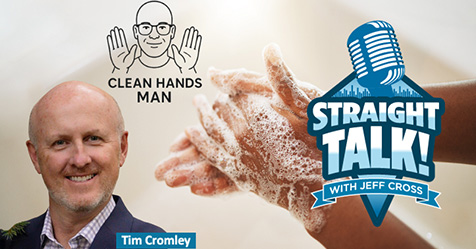Last October, the United States’ first Ebola patient was treated at Texas Health Presbyterian Hospital in Dallas, TX. The story of Thomas Eric Duncan made national news and set off concern when he succumbed to the disease—and when two nurses also contracted the virus shortly thereafter.
Presbyterian has been criticized for how it handled the outbreak. However, while the hospital made some critical infection-control missteps, it also did a lot of things right.
There is much that hospitals and other health care facilities can learn from this story, including how to strengthen their own training and infection control programs to prevent the transmission of healthcare-associated infections (HAIs), as well as outliers like the Ebola virus.
What Happened in Dallas?
According to a timeline released by a U.S. congressional committee, Duncan arrived at Texas Health Presbyterian Hospital’s emergency department on the evening of September 25, 2014, and was treated for initial complaints of nausea, dizziness, headache, and abdominal pain. He was released early the next morning with a diagnosis of sinusitis and abdominal pain
On September 28, Duncan returned to Texas Health Presbyterian Hospital with worsened symptoms, and he eventually tested positive for the Ebola virus. He was treated in isolation, and died October 8.
Four days later, the first nurse who had treated Duncan was confirmed to have the Ebola virus; on October 15, the second nurse who treated Duncan was also confirmed to have the Ebola virus. The nurses were treated intensively in isolation and cured of the virus. But still, the question remains: How did they contract the virus?
Failing to diagnose Duncan on his first admission to the hospital was the first mistake in the handling of his case. “Communication is critical, but no substitute for training,” Dr. Daniel Varga, chief clinical officer and senior executive vice president for Texas Health Resources, said in a White House briefing.
At Presbyterian, many of the staff members were learning on the fly; the hospital was still undergoing Ebola training when Duncan was diagnosed. According to a statement from National Nurses United (NNU) that was posted on behalf of some nurses who were working at Texas Health Presbyterian Hospital, “Advance preparation that had been done by the hospital primarily consisted of emailing us about one optional lecture/seminar on Ebola. There was no mandate for nurses to attend trainings, or what nurses had to do in the event of the arrival of a patient with Ebola-like symptoms.”
The NNU statement alleged that other infection control breeches allowed the Ebola virus to spread to Duncan’s caretakers, and identified a key problem: The nurses’ necks were exposed. In addition, the personal protective equipment (PPE) the nurses were required to wear were not doffed (or removed) properly.
The statement said some improvised by wearing medical tape, which is permeable, on their necks, and then had to remove the tape themselves, chancing infection. In addition, the NNU statement alleged there were “no policies in cleaning or bleaching the premises without housekeeping services” and that hazardous waste was piled to the ceiling.
The NNU statement was damning, but Texas Health Presbyterian Hospital also did many things right according to a USA Today article called, “Expert: Dallas Hospital Did Things Right—and Wrong.” Even though the contaminated waste piled up, it was properly sealed and the hospital tried to find a certified independent contractor to pick it up. Once Duncan was moved to isolation, the hospital followed U.S. Centers for Disease Control and Prevention (CDC) guidelines on treating the Ebola virus, hospital officials said in a statement. The CDC guidelines have since been criticized for being too lenient, and they were updated not long after Duncan was treated.
Looking Beyond Ebola
In 2011, 772,000 HAI cases were reported at hospitals in the United States. While they don’t get the national attention of Ebola, HAIs are a serious concern that can only be stopped with a strong infection control program.
Dr. Scott Harris, director of the EHS Advisory Services for UL Workplace Health and Safety, raises the question: How does the conversation shift if you substitute the word “flu” with the word “Ebola?” There is a new seriousness about it. However, Harris says, “The process should be the same regardless: Sticking to the procedure and knowing exactly what to do to stay safe.”
Harris stresses the importance of not only keeping HAIs from infecting patients, but also protecting the health care workers. “It goes both ways,” he says. “When you have an illness moving around in a hospital, it’s important that worker safety and patient safety have equal status. Hospitals are generally very good at patient safety, but often put the worker side of the equation at a big disadvantage.”
Review of Infection Control Protocol
In light of what happened in Dallas, hospital staff should look at their infection control protocol and training programs with more detailed focus, refreshing simple steps and adding to their programs when necessary.
Training
Presbyterian made some crucial changes in its Ebola training procedures after Duncan’s initial visit to the emergency department. According to the Texas Health Resources White House statement, the hospital started providing in-service, face-to-face training to all nurses at the start of every shift for a number of days after Duncan was diagnosed.
Lisa Sturm, MPH, CIC, director, infection prevention and epidemiology at the University of Michigan Health System, says a robust infection control training program needs to be run by a subject expert, must account for its audience’s learning styles, and should also include retraining. “Especially with a rare event or infrequently applied skill like Ebola, you have to retrain,” she says. “Whether it’s disinfecting a device or cleaning the environment, training once doesn’t cut it.” Sturm also recommends continuing to check competency.
When it comes to training, the basics are always the best place to start. “The trainer has to teach the foundation of infection prevention and germ theory and how germs spread,” Sturm says. “If somebody [who is] learning about how to clean an environment doesn’t understand the basic premise of how germs spread, then nothing’s going to make sense for them.”
Use of PPE
As we learned with Dallas, PPE was instrumental in allowing the virus to spread to the nurses.
The CDC has guidelines for different diseases when it comes to PPE, so it’s imperative to reference that information for guidance. But as we know from Dallas, that information must also be supplemented by training and knowledge of the disease and its transmission. The hospital itself is ultimately accountable for how its staff and patients are protected, not the CDC. “If you believe the CDC guidelines are not adequate, there’s nothing there that stops you—the hospital—from going beyond the guidelines,” Harris says. “In fact, the U.S. Occupational Safety and Health Administration (OSHA) requires the employer, not the CDC, to determine the hazards, the PPE, and the procedures needed to protect [its] workers.”
It’s also important for staff to use good judgment and take care. For example, an Ebola expert with the CDC noted that nurses at Presbyterian were doffing PPE without proper supervision. It is imperative to always make sure another worker is watching whenever donning and doffing PPE in an infection control situation.
Here are some helpful steps to follow for donning (putting on) and doffing (removing) PPE, according to the CDC’s updated guidelines, which reflect lessons learned from the Ebola case in Dallas. While these guidelines focus on caring for patients with Ebola Virus Disease, they provide a useful reference point when establishing procedures for the use of PPE in all types of infection control situations.
- Develop a step-by-step donning and doffing process for all training and daily practice.
- Do not allow health care workers to enter the patient care area unless PPE has been donned correctly and in the proper order.
- A trained observer must monitor all donning and doffing of PPE.
- Do not adjust PPE during patient care.
- Remove PPE slowly and in the correct sequence.
- Ensure your facility has a structured procedure, a trained observer, and a designated area for PPE donning and doffing.
For additional guidelines, visit www.cdc.gov/vhf/ebola/healthcare-us.
Environmental Cleaning
When it comes to environmental cleaning in the health care setting, protocol is not always straightforward. Nurses and clinical staff disinfect patient care equipment while the environmental services and housekeeping staff disinfect other types of equipment. In Dallas, the nurses expressed concern over the contaminated waste piling up in the isolation room. But according to the CDC’s independent review, the piling waste did not cause a concern because it was properly sealed, triple bagged, and disinfected.
This disconnect highlights a lack of communication between the nursing staff and the environmental services department.
Nicole Kenny, senior director of professional and technical services for disinfectant manufacturer Virox Technologies, Inc., stresses the importance of collaboration when it comes to infection control in health care settings. The housekeeping staff and the clinical staff must be explicit about which pieces of equipment they are cleaning and how frequently. Kenny shared a firsthand experience that reinforces the need for collaboration and communication between these, and all, departments in a hospital.
She and her team were looking at the spread of Clostridium difficile (C. diff) and observing the cleaning and disinfecting of patient rooms in a hospital. “There was a commode in a patient’s room that for seven days did not get cleaned,” she recalls.
When Kenny got nursing and environmental services to come into the room, nursing believed environmental services was responsible for cleaning the commode. However, environmental services believed nursing was responsible for cleaning it, since the commode was on wheels, making it a portable-care device. There wasn’t much more need to explore how the C. diff was spreading after that conversation.
Learning Important Lessons
There had to be a first hospital to deal with the Ebola virus, and that hospital ended up being Texas Health Presbyterian Hospital in Dallas. “Ebola kind of blew out of the water everything we knew about viral spread,” Sturm says. “We all had to adjust our game plans.”
Yes, there were flaws in the hospital’s infection control protocol that allowed patient-care personnel to become infected. As Ebola has since been controlled in the United States, we can use this lesson to focus on the serious problems facing health care workers across the country. HAIs are a real threat to everyone’s health and safety, and the only way to stop them is to follow a strong infection control program and learn important lessons where you can.




